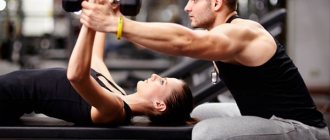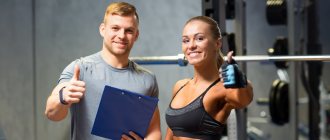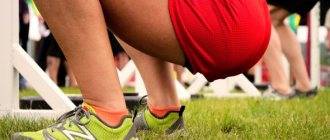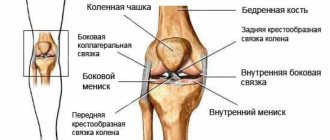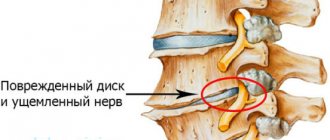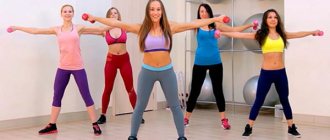Previously, morning exercises were an important part of the daily routine of a Soviet person. But over time, the development of fitness and strength sports, exercise has faded into the background or even out of life, since there is already enough load. And the pace of life of a modern person is such that there is no time left for gymnastics. But if you still decide to devote 10 minutes to exercise in the morning, then undoubted benefits are guaranteed throughout the day. Not to mention the fact that gymnastics has a positive effect on the quality of the working day.
How to do exercises in the morning correctly
In no case should exercise become a morning workout that serves as a replacement for evening exercise. Excessive load, on the contrary, takes away strength, overtires, and you should not expect a beneficial effect from charging. 10-15 minutes a day is enough to begin with, and for advanced users up to 20 minutes, provided that the complex is performed daily. A maximum of two days of rest is allowed. Perform movements smoothly, without fanaticism.
It is important to exercise on an empty stomach; you can drink a glass of water before the complex.
How it appeared
Even in Ancient Greece, this aerobics was considered a male sport - from there it has come down to the present day, transformed. Then the Spartans performed rhythmic movements to the beat of drums. Such exercises improved plasticity, flexibility, strengthened the back muscles, and also developed a sense of rhythm. These exercises can be compared to rhythmic gymnastics, only they were more dynamic.
Dr. Demeny is the founder of health aerobics. He developed a special program consisting of repeated rhythmic movements. When they are performed, certain areas of the muscles relax and contract. The perception of dance rhythm improves, and due to this, strength and endurance, and the whole body is easier to maintain in good shape.
In the 20s, home aerobics for weight loss began to actively develop in Russia - it was then that dancing was very popular. Sports and dance schools were opened in full swing, where the main attention was paid to the emotional and rhythmic components. There were no age restrictions, social class also did not play any role . The exercises were performed to music, then solfeggio, plastic movements, and improvisation began to be added to them.
Complex of morning exercises for beginners
Start your morning with a deep breath: raise your arms through your sides and reach towards the ceiling, rising on your toes, exhale, return to your full foot and lower your arms, and so on 3 times.
Warm-up
The complex will take 10-12 minutes. As you get used to the program, the duration and number of repetitions can be increased.
Cervical region
Exercises 1
Stand straight, feet shoulder-width apart, palms on your waist, pull the top of your head up. Turn your head to the sides smoothly, without jerking. When turning, keep your chin parallel to the floor.
Exercises 2
Head tilts: look straight ahead, your chin should be at the same point. When bending, do not try to reach your ear to your shoulder or, conversely, raise your shoulders towards you. Gently stretch the sides of your neck.
Exercises 3
Roll your head in a semicircle without throwing it back. Tilt your head to the right and slowly roll your chin on your collarbone to your left shoulder, stop and return back.
Shoulder girdle joints
Exercises 4
Perform circular movements with your shoulders in one direction and the other.
Then add your arms to the stroke, rotating the joints through a full range of motion in both directions.
Exercises 5
Rotate your elbow joints, spreading your arms to the sides, one and the other.
Exercises 6
Hold your arms overhead and only rotate your hands in both directions.
Thoracic region
Exercises 7
Raise your arms above your head, clasping your hands together, without raising your shoulders to your head. Perform small bends to the sides alternately, without including the lumbar region. Stretch the side muscles of the body without large amplitudes.
Exercises 8
Stretch your arms to the sides and twist the thoracic region to the sides; when turning to the sides, do not rotate the lumbar region and pelvis.
Hip and lower back
Exercises 9
Rotate your pelvis in a circle, standing on straight legs, keep your hands on your waist. Perform rotations through full amplitude.
Exercises 10
Bend over, touching your palms to the floor. Do some soft springs at the bottom, standing with straight knees and rise up. Do this several times, but without sudden movements.
Knee and ankle joints
Exercises 11
Place your palms on the floor, touching your fingers to the floor, and squat, completely lowering your pelvis to your heels. When squatting, the heel comes off the floor and the toe rises. And straighten up, fully extending your knees, but do not lift your palms off the floor. And so several times, stretching the back of the body.
Exercises 12
Get up, stand straight and roll from toe to heel.
Main part
Side bends
This exercise is performed with full amplitude. Place your feet wider than your pelvis, raise your right arm above your head and bend to the left a maximum of 15-20 times, repeat on the other side. When performing the exercise, do not move your pelvis, work only with your torso.
Forward bends
Place your palms on your waist, feet shoulder-width apart. Bend forward with a straight back and straight knees. Lower your torso as low as possible until it is parallel to the floor, but do not round your lower back. To make the exercise more difficult, you can hold your arms above your head. Perform 15-20 bends on each side.
Squats
Place your feet slightly wider than your pelvis and point your toes slightly apart. Keep your hands in front of you. Squat until parallel to the floor, move your pelvis back, but do not lean your body onto your hips. It is important that your knees do not go into a sharp corner. Squat 20-30 times.
Mill
It is important to perform this type of twist with a straight back. Place your legs wide, tilt your body until it is parallel to the floor, spread your arms to the sides and begin twisting - turning your body, raising your arms up and down alternately. The arms do not move separately, but together with the body. Perform 20-30 crunches.
Swing foot to palm
Place your feet wide and raise your arms in front of you. Perform alternate swings of straight legs towards the opposite palm. When performing swings, do not round your back; perform the movement using the swing and flexibility of your legs, and do not lean towards your feet. Perform 15-20 swings on each leg.
Rifles
Place your feet as wide apart as possible. Bend your body forward and touch your palms to the floor. Bend your right knee and lower your pelvis as close to your heels as possible. Roll your pelvis towards your left leg, not lifting your pelvis up, but extending it as low as possible above the floor. Don't take your hands off the floor. After rolling to the other leg, smoothly repeat the movement back, and so on 10-20 times.
Hitch
The end of the exercise involves restoring your breathing, so walk slowly around the room, breathe evenly and deeply. At the end, stay in place, rise onto your toes and take a deep breath and exhale forcefully, raising your arms up to your sides.
How to do the exercises correctly
Any sport has its own structure of activities, aerobics is no exception..
- First comes a warm-up to warm up the muscles and speed up the heart rate. This way you enter the desired aerobic phase. This takes no more than seven minutes.
- Next comes the main part, also known as the aerobic phase. This is a whole set of exercises, not just one or two.
- The cool down is the final stage - you are still moving, but the pace gradually decreases. Your heart rate should return to normal gradually. This also takes an average of seven minutes.
After completion, you cannot immediately sit down to rest - continue to move so that your breathing is restored, your heartbeat returns to normal, and blood circulation through the vessels is normalized.
It’s so easy to bring fitness into your life at home, reviews of which are mostly positive.
Complex of morning exercises for advanced people
Warm-up and cool-down remain the same; perform the movements dynamically, but without jerking. The complex will take 15-20 minutes, perform one set of each exercise. Over time, the number of repetitions can be increased, but the duration of the workout should not exceed half an hour, otherwise it will not be exercise, but a full-fledged workout.
Squats
Squats are performed according to the classic pattern: feet shoulder-width apart, arms in front of you, knee not extending forward beyond the toe. Perform 20-30 repetitions. To make the load more challenging, add springing movements to squats. Thus, perform 15-20 squats, do the remaining repetitions with three springs at the bottom point with an emphasis on working the gluteal muscles and rise up - this is one repetition, at least 5-10 times.
Lunges + swing
Place your feet together, keep your palms on your waist. Lunge your right leg back, placing it on your toes, without touching your knee to the floor, push off and swing the same right leg forward while lifting as much as your muscles allow. After swinging your leg, lunge back again with the same leg. And so you work on one side 20-30 times, then the same on the left leg.
Push ups
Perform the exercise with wide palms. Girls can do push-ups from their knees or on a height, for example, on a table. Do as many repetitions as possible until your muscles fail.
Plank in dynamics
Get into a plank position, tightening and tightening your abdominal and buttock muscles while maintaining a straight spine. The dynamic version of the plank involves more muscles, both deep and external. Take an extra step with your right foot to the side, and put your left foot towards it. Then take a left step to the side, place your right one. Work like this for about a minute. If you wish, you can lower yourself onto your elbows.
Second option: keep your feet in place, lift from your forearms on straight arms one at a time, and also lower yourself onto your elbows. Do this for about a minute.
boat
Lie on your stomach, stretch your arms in front of you, keep your feet hip-width apart. It is important to constantly tense your abdominal and buttock muscles. Exhale and lift your chest and hips off the floor without arching your lower back. Keep your head straight, the top of your head stretches in the direction of your palms. Lower yourself to the floor slowly. Repeat the lifts without bending your lower back 20-30 times.
Crunches
Lie on your back, straighten your legs in front of you, place your hands behind your head. As you exhale, slowly lift each section of the spine gradually without jerking. Fully straighten at the top, pulling the top of your head toward the ceiling, then slowly return your back to the floor in reverse order. If it's difficult, keep your hands in front of you.
How to do strength exercises
The morning complex consists of 10 exercises, the last one is breathing. Rest no more than 10 seconds between them. You can set a timer or just count to yourself.
Isometric wall squats
Go to the wall, lean your back on it and squat until your thighs are parallel to the floor. The angle at the knee should be 90 degrees. Place your hands in front of you. Hold this position for 20 seconds.
Shoulder touches while lying down
Stand in a prone position, raise your right arm and touch your left shoulder. Return it to the floor and repeat the same for your left arm - touch your right shoulder and lower it back down. Do 10 times for each side.
V-position hold
Sit on the floor, straighten your back, raise your legs bent at the knees, keep your shins parallel to the floor. Stretch your arms along your body at knee level. Hold the position for 20 seconds.
Squats
Turn your knees and toes slightly to the sides, keep your back straight, squat until your thighs are parallel to the floor or lower. Repeat the exercise 20 times.
Push ups
Do push-ups in the classic version or from your knees. During the exercise, point your elbows back, not to the sides. Squeeze your buttocks to keep your back straight and not arch in your lower back. At the lowest point, touch your chest to the floor. Do 10-15 push-ups.
Bicycle on the back
Lie on your back, put your hands behind your head, press your lower back to the floor. Raise your legs straight to a height of about 30 cm from the floor. Pull the knee of your right leg towards you, at the same time turn your body to the right and stretch your left elbow towards your right knee. Repeat the same for the other side.
Pull your knees towards you one at a time, making a circular motion, as if pedaling a bicycle. Do not lower your feet to the floor until the end of the exercise. Do 20 movements.
Jumping out of a squat
Place your feet shoulder-width apart, turn your knees and toes out to the sides. Squat until your thighs are parallel to the floor or lower, jump up and lower back down. Do 20 times.
Burpee
Stand in a lying position, lower yourself to the floor, touch it with your chest and hips. Rise back up into a prone position, jump with your legs towards your hands, straighten up and jump up, clapping your hands above your head.
If it’s hard for you, don’t fall to the floor: from the prone position, immediately put your feet up and jump up. Do 10 burpees.
Rock climber
Stand in a prone position, pull one knee to your chest, and then jump to switch legs. Try to keep your pelvis in one position so that it does not move when changing legs. Do 20 times.
Breath
Sit on the floor with your back straight, place your legs as you feel comfortable: sit on your heels or fold them cross-legged. Do 10 breathing cycles while inflating your belly. Inhale deeply and exhale completely, concentrating as much as possible on the exercise, you can close your eyes.
That's it, charging is complete. Let it become a constant component of your morning, and let every day begin cheerfully and in a great mood.
But remember: not a single exercise will help you feel good in the morning if you haven't slept much or, even worse, don't get enough sleep all the time.
How to motivate yourself to do exercises
The main task is to decide on the purpose for which you need to do exercises. Perhaps there are problems with waking up and bringing yourself to your senses, fatigue during the day, weakness, or maybe poor posture, muscle weakness. Such seemingly trifles greatly affect the quality of a full life, they need to be eliminated. Therefore, just 10 minutes every day will simplify your life, make the start and continuation of the day easier and prevent the risk of various diseases, it is worth it to start doing simple exercises.
Related materials:
Gymnastics | exercises | breathing exercise | press | training | workouts | workouts at home | morning | charging | Soviet Union | Vladimir Vysotsky
Articles
- Girl on the Ball. What is a fitness ball for? 03 February 2011, 08:00
- Funny pictures from the magazine “Crocodile” June 04, 2011, 00:00
- Despite the years: Jia Daozhang, Antonina Melnikova and Antonina Kulikova July 26, 2013, 19:00
Video
- Idylle by Guerlain. History of creation October 25, 2011, 11:03
- Press day “The Art of Being Beautiful with ILE DE BEAUTE” April 13, 2015, 14:30
- Press day “The Art of Being Beautiful with ILE DE BEAUTE” March 02, 2016, 10:00
What results can you expect?
Of course, morning exercises will not replace full exercise and will not give you the body of your dreams in 10 minutes. Exercise will spur the body to take further action: it motivates, helps you find the strength to fight excess weight, and most importantly, ensures good health. A vigorous and healthy body is already a success. Therefore, after such exercises, the muscles will become toned, become more elastic, and the joints will be more mobile. And the rest is up to you.
And also read how to do Pilates → Breathing exercises for weight loss - oxysize.
Why do you need fitness exercises article on healthy lifestyle on the topic
FITNESS EXERCISE
We have been told about the benefits of exercise since childhood. This is already a kind of hackneyed truth, but it’s hackneyed because it’s completely fair. The biggest difficulty is overcoming yourself, your laziness. But, having crossed this barrier, you will, first of all, receive great moral pleasure from the awareness of your strength, from the fact that you are an integral strong-willed person, capable of not just going with the flow, but independently shaping both your body and your life. This thought itself can be more powerful than any mantra. And life will not be slow to smile back at you. Physical activity will give you vivacity and energy, a feeling of joy, upliftment, and, therefore, the world around you will sparkle with completely different colors. Remember the perky Soviet song: “The morning greets us with coolness / The river meets us with the wind” and further “Don’t sleep, get up, curly / In chains, ringing, / The country rises with glory / To meet the day.” It turns out that you can rise “with glory”, breaking the shackles of everyday heaviness, you can let music into your home, give yourself the joy of movement and, most importantly, health.
Another hackneyed truth: morning exercises are extremely beneficial for your health. Your body is toned, all internal organs are awakened and ready to work. Simple exercises, a contrast shower, a delicious breakfast - and now you have forgotten about the heaviness in your stomach, about colds and flu, about all kinds of infections, about the feeling of chronic fatigue and the need to swallow endless pills. Day by day your body will become stronger, more resilient and more beautiful.
Fitness classes with musical accompaniment are endurance training in the form of aerobic dancing. At the same time, oxygen flow and consumption are strictly balanced. This kind of cardio training gives everyone the opportunity to exercise taking into account their own level of physical fitness. The individual training intensity limitation is calculated as 220 minus the number of years (i.e. age). We take 70–85% of the value we received, and we have an optimal indicator for the level of intensity of our training. For people aged about 40 years, for example, the intensity of an ideal workout should be 125-150 beats per 1 minute.
An important parameter when selecting music for fitness is the “square” structure of musical works with a set of 32 counts. This means that in a musical phonogram each combination will be 4 measures, each measure 8 counts. The limits of such musical combinations will be perceived by ear as a short break in sound, a change of theme, a contrasting burst of musical thought, etc. An important parameter will be the set training pace – i.e. number of beats per minute. Based on the fitness level and age of the participants, you can set the pace of your workout to medium, slow or fast. As a rule, an intensity of 120–140 beats per minute will correspond to a low tempo; whereas high tempo – over 140 beats in 1 minute. You are more likely to achieve the optimal level of exercise if the fitness music tempo is higher.
A little music while doing fitness helps improve your thinking abilities! Fitness has been proven to improve cognitive performance. Listening to music also improves your thinking abilities. Doctors tried to combine both effects. Before and after the training, the researchers assessed the participants' mood, anxiety and depression levels, and also tested their abilities in abstract thinking, planning and fluent speech. Moreover, during certain periods of training, participants not only stretched their muscles, but also enjoyed Vivaldi’s “The Four Seasons.” It turned out that after such classes with music, people felt emotionally better. It didn't depend on whether they listened to music or not. But indicators of intellectual well-being after fitness classes in combination with music doubled! So it makes sense to exercise while listening to music to train both your muscles and your brain. True, doctors believe that in the future it would be good to find out the musical preferences of patients and evaluate the impact of different musical styles on the brain. Today, musicologists in white coats are ready to vouch only for the classics.

